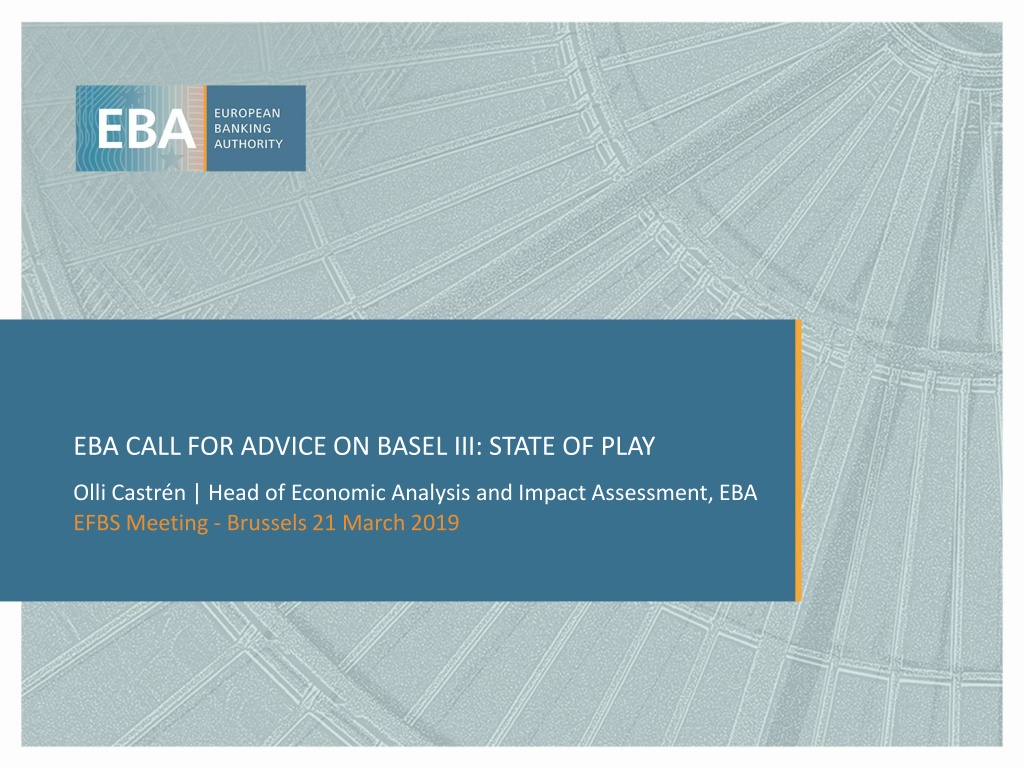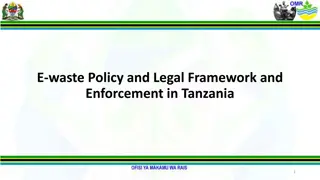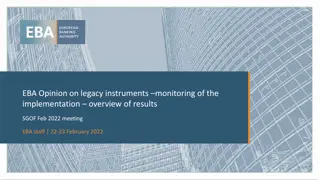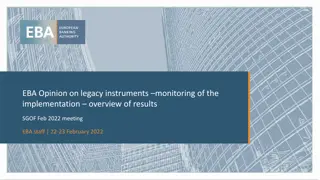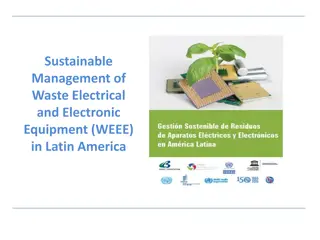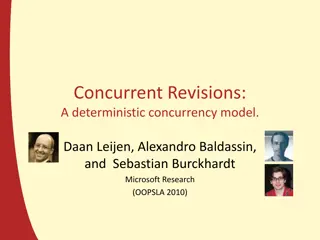Overview of EBA Call for Advice on Basel III Revisions
Basel III revisions aim to reduce undue variability in risk-weighted assets, introducing new risk weights and asset classes, updated methods, and a more granular approach to credit risk. The reforms impact capital requirements, operational risk, and leverage ratio, with a focus on enhancing financial stability and risk management across banks. A comprehensive assessment is ongoing, following the Call for Advice in November 2018.
Uploaded on Oct 11, 2024 | 0 Views
Download Presentation

Please find below an Image/Link to download the presentation.
The content on the website is provided AS IS for your information and personal use only. It may not be sold, licensed, or shared on other websites without obtaining consent from the author.If you encounter any issues during the download, it is possible that the publisher has removed the file from their server.
You are allowed to download the files provided on this website for personal or commercial use, subject to the condition that they are used lawfully. All files are the property of their respective owners.
The content on the website is provided AS IS for your information and personal use only. It may not be sold, licensed, or shared on other websites without obtaining consent from the author.
E N D
Presentation Transcript
EBA CALL FOR ADVICE ON BASEL III: STATE OF PLAY Olli Castr n | Head of Economic Analysis and Impact Assessment, EBA EFBS Meeting - Brussels 21 March 2019
Basel III revisions: reducing undue RWA variability New risk weights:exposures to banks, exposures to corporates [ ] New asset (and sub-asset) classes: specialised lending, high quality infrastructure lending, income producing real estate, equity, covered bonds. SMEs, [ ] New methods: loan splitting for real estate, no sovereign support within bank risk weights [ ] A more granular SA to credit risk A-IRB no longer available for: Large Corporates and Banks New risk parameter input floors New treatment of guaranteed exposures Constraints IRB to credit risk New Standardised Measurement Approach: replaces all existing approaches AMA no longer available National discretion on role of historical losses New operational risk framework RWAs never lower than 72.5% of standardised equivalent RWAs Transitional implementation (2022-2027) and transitional +25% cap on impact Output floor All banks: Revised LR exposure measure G-SIIs: LR surcharge = of G-SII capital buffer Leverage ratio June 2019 CfA : FRTB as per January 2016 BCBS framework September 2019 CfA: update reflecting final BCBS FRTB framework (may not include final CVA revisions) Fundamental Review of the Trading Book & CVA 2
An appetizer: impact of the reform as of October 2018 EBA Basel III monitoring report Capital shortfalls Overall impact of full implementation of the final Basel III (2027), in % change of Tier 1 MRC, All banks Source: October 2018 EBA Basel III Monitoring exercise report (reference data Dec 2017) Source: October 2018 EBA Basel III Monitoring exercise report (reference data Dec 2017) Main drivers: output floor and operational risk Largest banks more impacted: G-SII +25.4% MRC, Group 1 +18.7% MRC, Group 2 +3.8% MRC Note: Systemic Buffers and P2 not included! 3
Key findings by risk category Operational risk (+5.7%) Basel III national discretions: Loss materiality threshold at 100k (instead of 20k): +4.5% Discretion of setting the ILM = 1 (instead of bank-specific): +1.4% CVA risk (+3.3%) Basel III scenario excludes EU CVA exemptions: if exemptions kept impact will be lower Leverage ratio (-5.1%) LR-constrained banks do not pay part of the RWA-driven increase in capital: this explains the LR negative offset result at aggregate level (-5.1%) The leverage ratio Tier 1 MRC in the sample increases when looking at it in isolation(+5.1%), due to the introduction of the G-SIIs surcharge 4
More comprehensive assessment under way: the Call for Advice (CfA) 9 Nov 18 11 Jan 2019 QIS submission deadline for small banks Deadline for qualitative survey 13 Aug 18 Launch QIS 12 Oct 18 9 Nov 18 End-Jun 19 QIS submission deadline for large/medium banks Launch Qualitative survey CfA Report Publication 5
Data collection status QIS and Survey Samples 186 banks in the QIS cumulative analysis (as of today) Why are some banks excluded? NOTE: Banks excluded due to consolidation (subsidiaries of EU parents) will inform the Business Model Analysis 178 banks submitted the Qualitative Questionnaire 25 ECAIs submitted the Qualitative Questionnaire * CR SF: Credit risk scaling factor 6
Analytical elements of the CfA (non exhaustive) Capital requirements Pillar 2 included in the impact calculation (besides P1 and buffers) Proportionality and business models Impact assessed as per Large / Small non-complex / Other CRR2 clustering Impact assessed per business model Level of consolidation QIS: highest level of EU consolidation Subsidiary analysis: O-SII subsidiaries + Qualitative Questionnaire on impact at subsidiary level (largest subsidiary per business model in the Banking Group) Marginal quantitative impacts All but one approach : impact of individual provisions assessed vs. overall package Macroeconomic impact Collaboration EBA-ECB Qualitative analysis (survey) Policy elements that cannot be assessed via QIS and input from ECAIs 7
Main areas of focus in the CfA (non exhaustive!) Credit risk Credit Ratings (SA) Overall: ECRA (ratings allowed) vs SCRA (ratings banned)? Corporate exposures: mixed approach? (EU vs. US, IG vs. non-IG) Real estate: loan-splitting vs whole loan CRR/CRR2 SME and infrastructure supporting factors: interaction with Basel III new risk weights for SMEs and high quality infrastructure lending? Operational risk: Role of historical losses ILM discretion: bank-specific or flat =1? Materiality threshold discretion: 20K or 100K? Output floor Interaction with Pillar 2 and macro-prudential buffers What are the overlaps? Need to reconsider P2 breakdown Is RWAOF the new measure of risk feeding in throughout? Interaction with Leverage Ratio: overall backstop to RWA variability? 8
EUROPEAN BANKING AUTHORITY Floor 46, One Canada Square, London E14 5AA Tel: Fax: +44 207 382 1771 +44 207 382 1776 E-mail: info@eba.europa.eu http://www.eba.europa.eu
